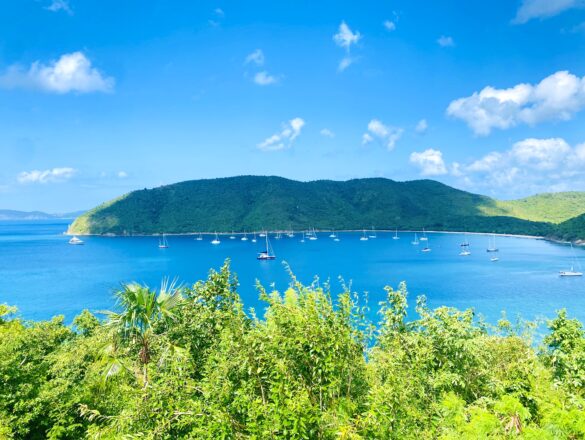After visiting Puerto Rico, our next stop was the U.S. Virgin Islands, about 45 miles east of Puerto Rico in the Caribbean Sea. The USVI’s are a territory of the United States and consist largely of three islands: Saint Thomas, Saint Croix, and Saint John. Besides these mainland islands, there are about fifty small, mostly uninhabited, islands and cays in the USVI’s, with a mass of about 133 square miles.

From Culebra, we made our way 22 nautical miles northeast to Saint Thomas to anchor for the night. We didn’t go ashore on this trip as our plan was to keep heading east and then come back to Saint Thomas later. The winds were going to pick up from the southeast, and the anchorages on the south coast of Saint Thomas wouldn’t provide the protection we wanted.
So we left the anchorage in Saint Thomas the following morning and made our way to the beautiful bays of Maho and Francis in Saint John where we would get great protection from the prevailing winds. Our plan was to stay in Saint John for several days, enjoy the beautiful beaches and tour the island. It was 12.9 nautical miles from Saint Thomas to Saint John, and took us just over two hours. We sailed much of the way on a broad and beam reach and were going 8.0-8.7 knots for over an hour. We were cruising and it was fun!
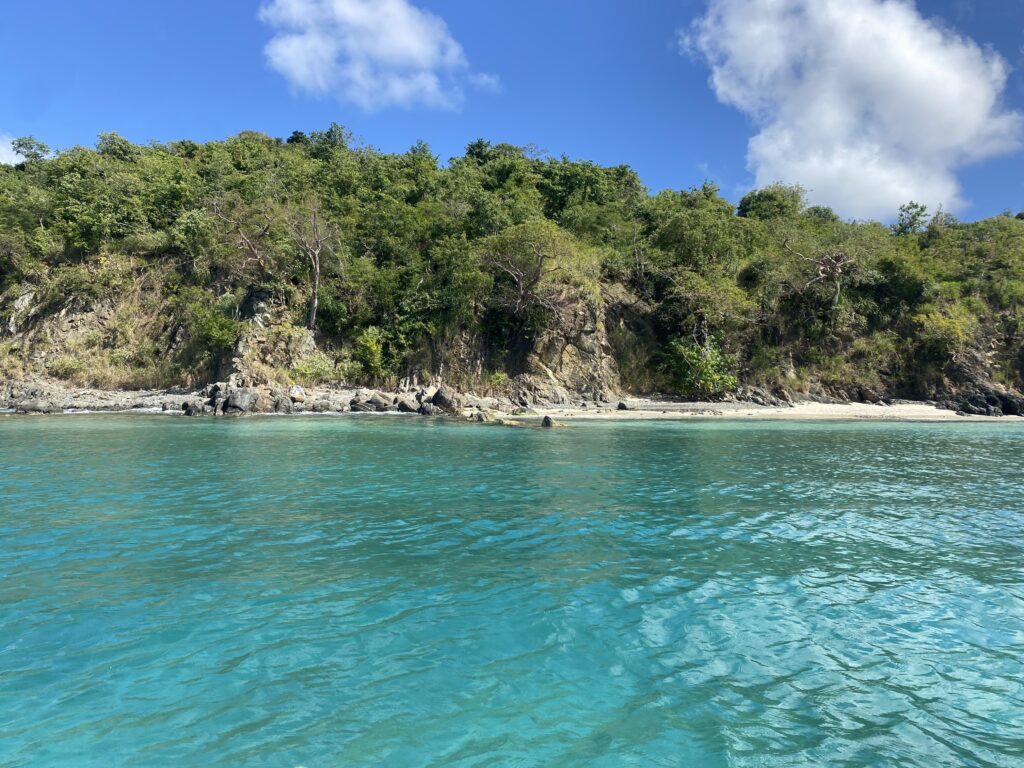
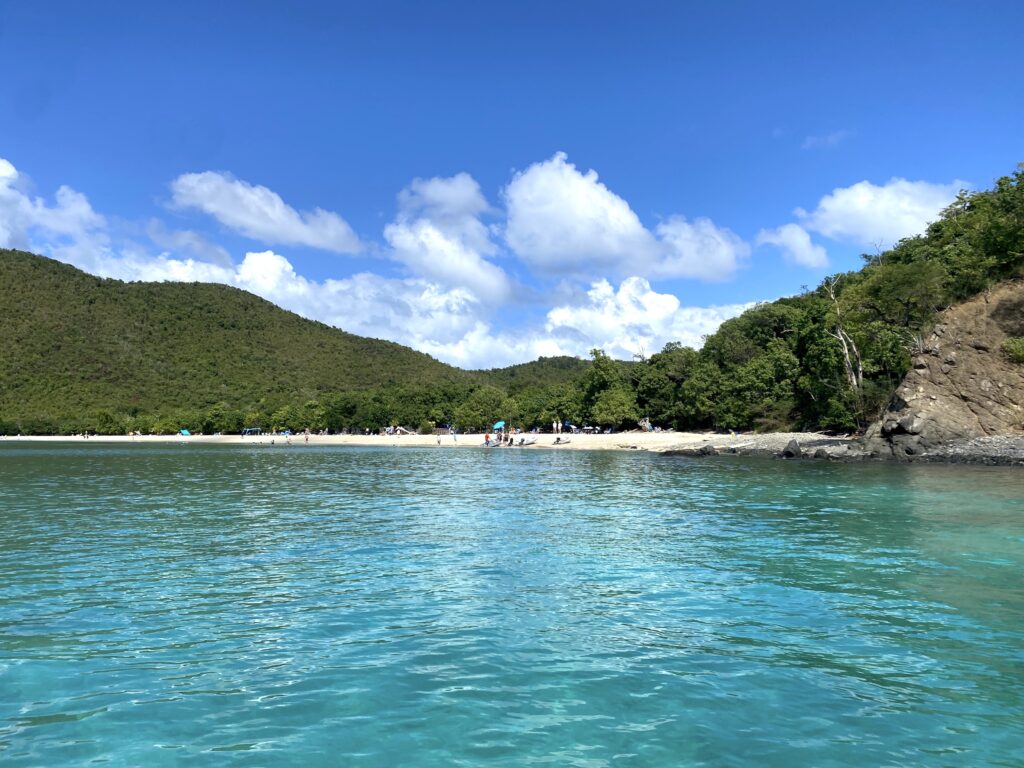
The anchorages in Maho and Francis Bay is protected by the National Park Service and is now a large mooring field. Anchoring is allowed, but only behind the mooring balls in 50 feet of water. We don’t have enough chain and rode to comfortably anchor in that depth of water, so we opted for a mooring ball. With Kory’s military National Park Service discount, the mooring balls were $13 per night, and well worth it for this impressive wildlife preserve. Being moored in the turquoise waters, overlooking golden beaches, and encased by forested hills was quite a treat – what a place to make our home this week
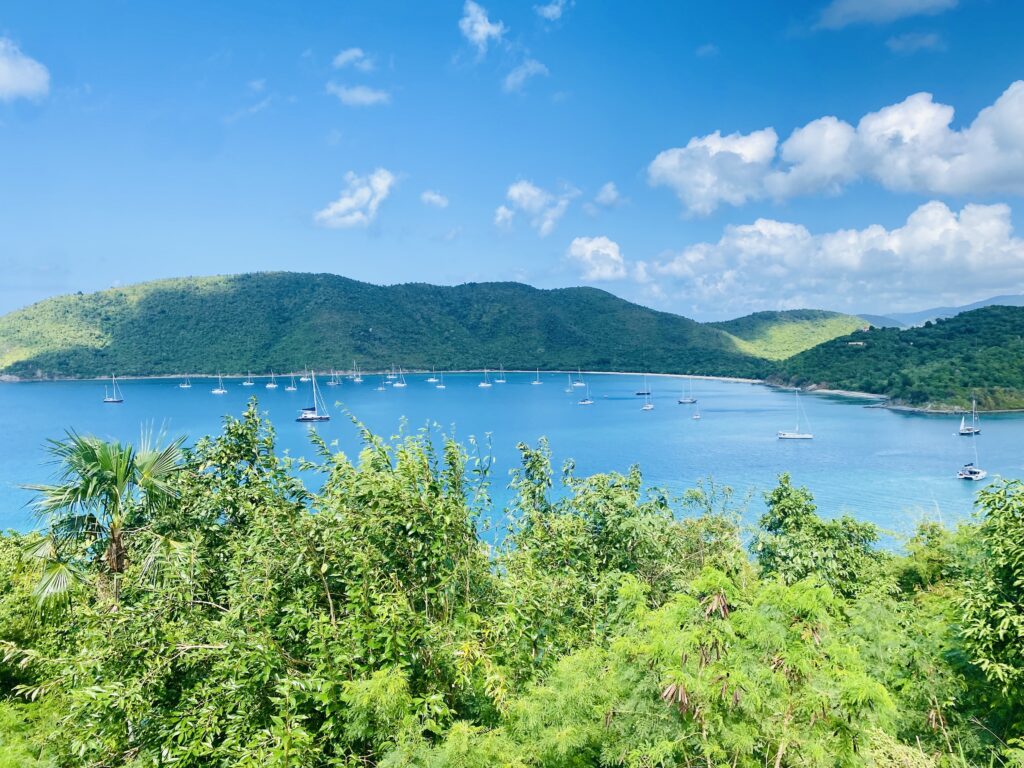
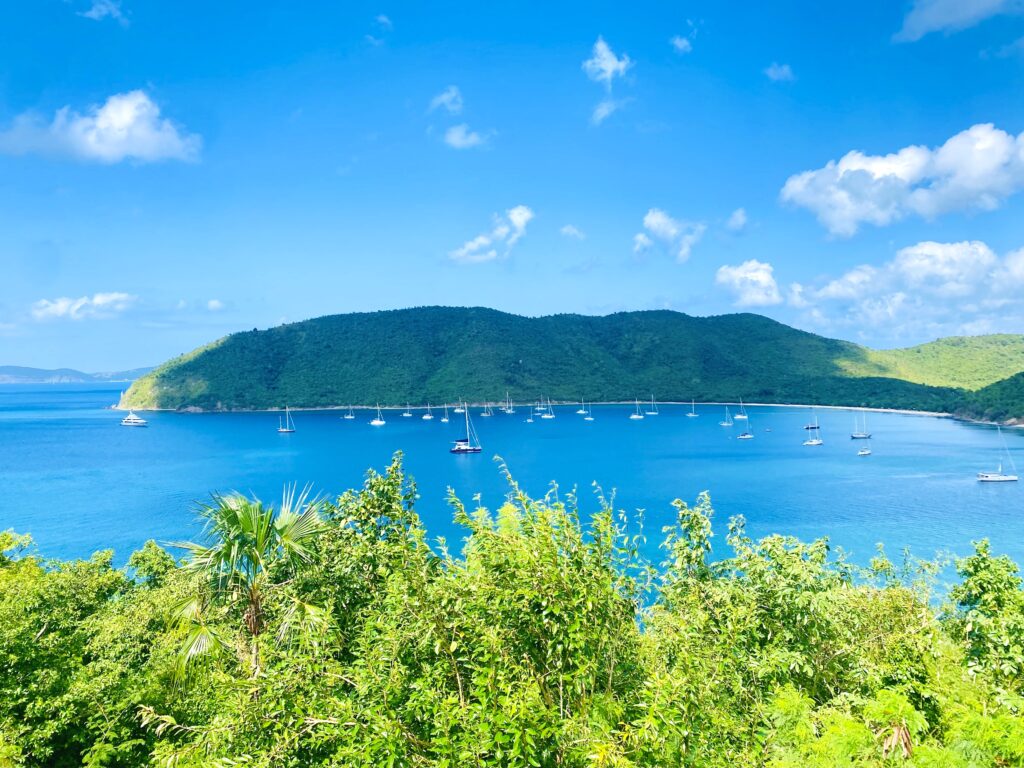
It didn’t take us long, after securing our lines to a mooring ball, before we got in the dinghy and met Craig and Bobbi on the beach to go for a walk with the dogs. The waters in this bay are clean and clear, with brilliant displays of blues and greens. We had a great time strolling along the beach and conversing with tourists who happened to be visiting this area for the day.
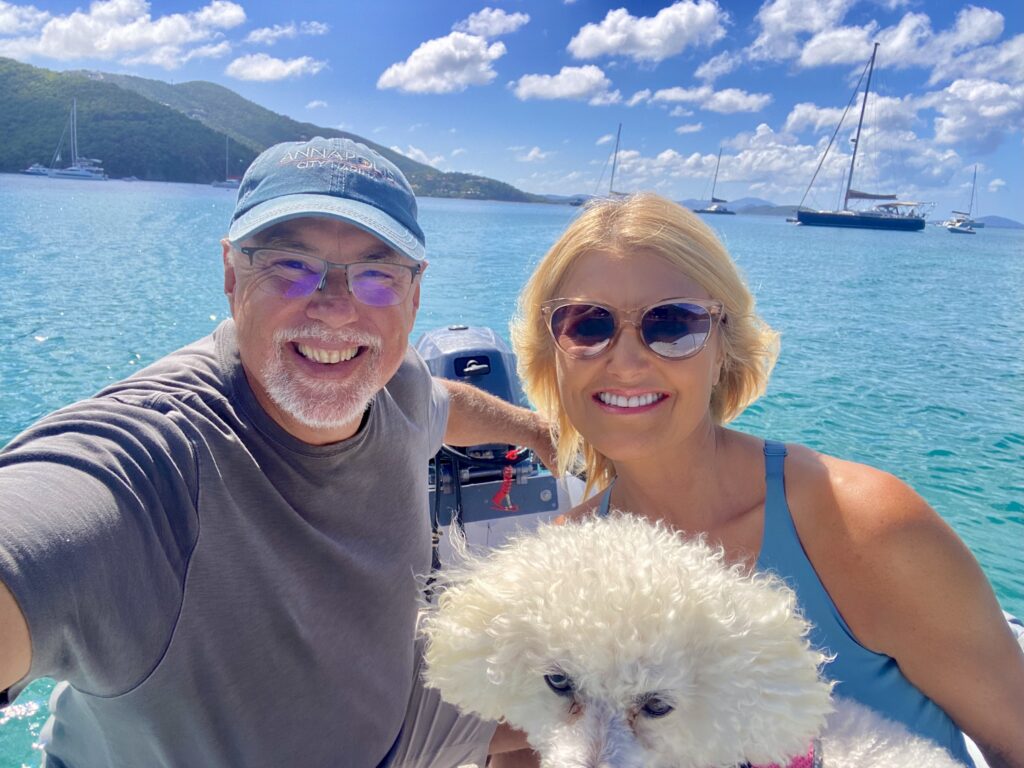
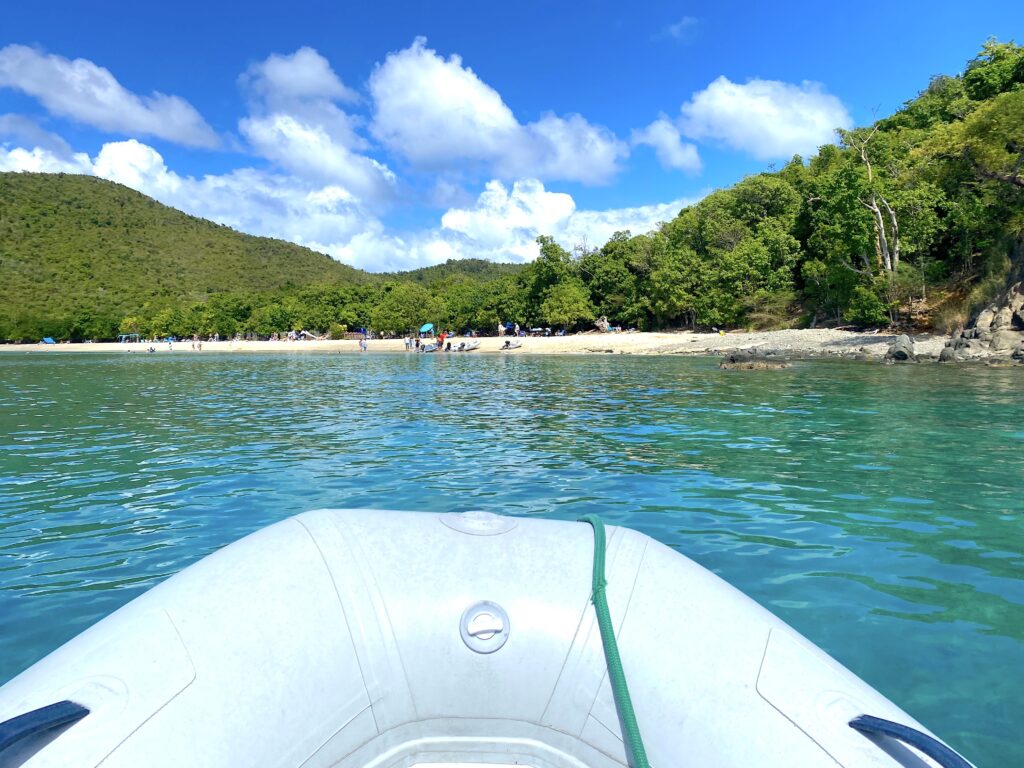
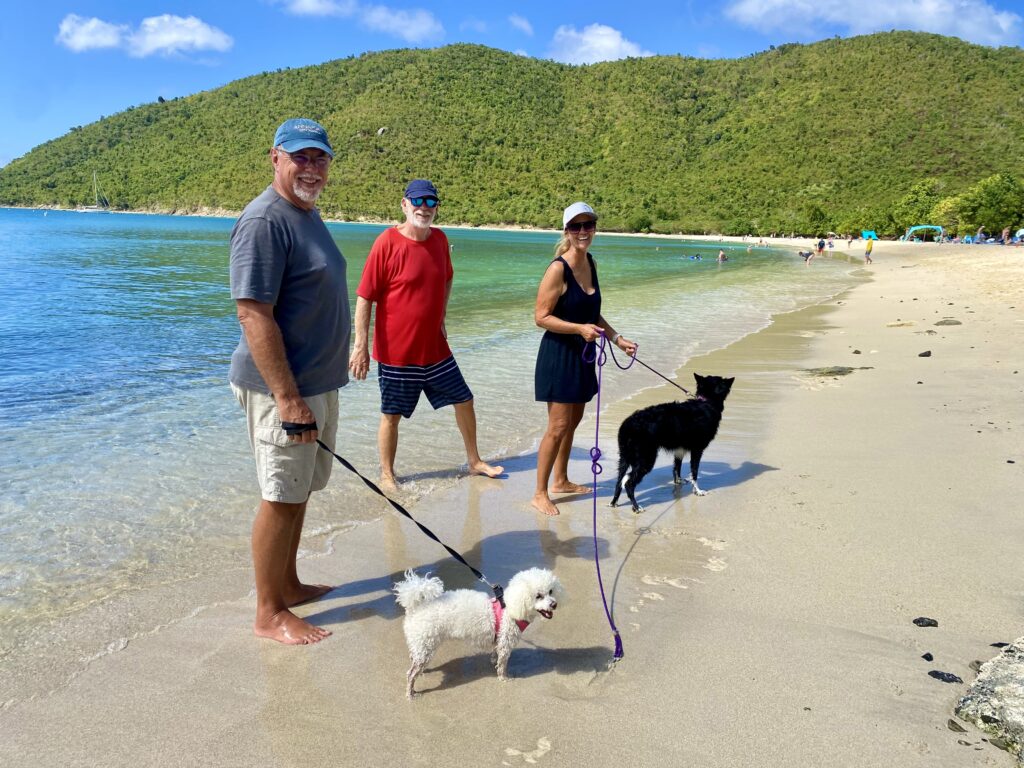
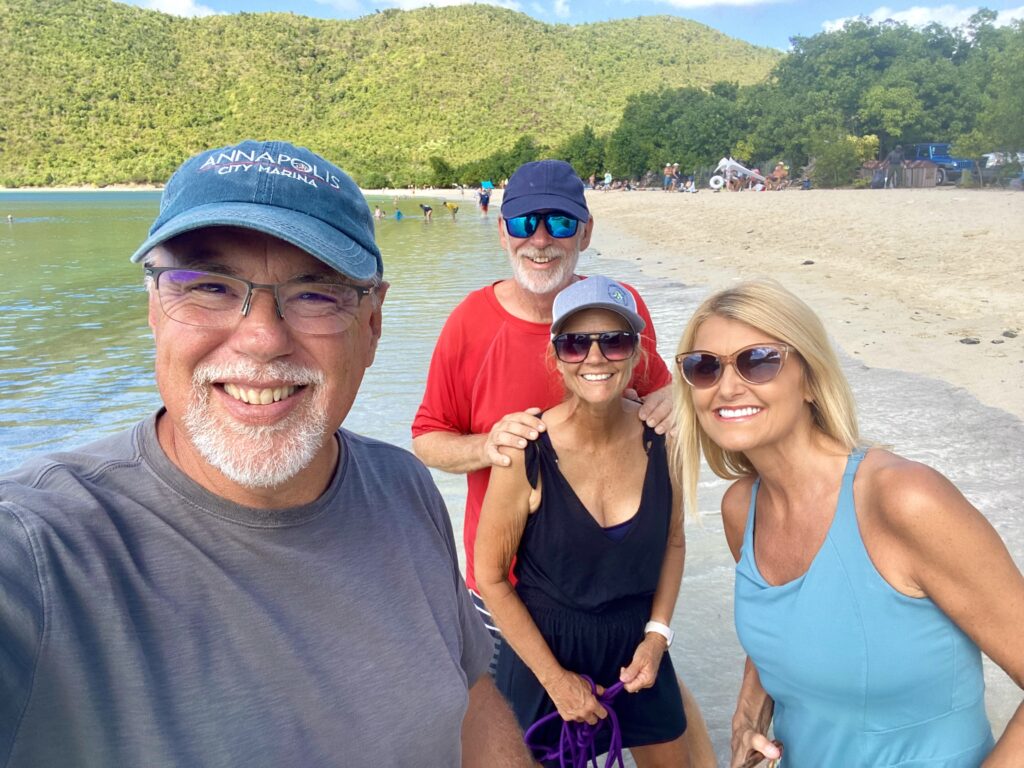
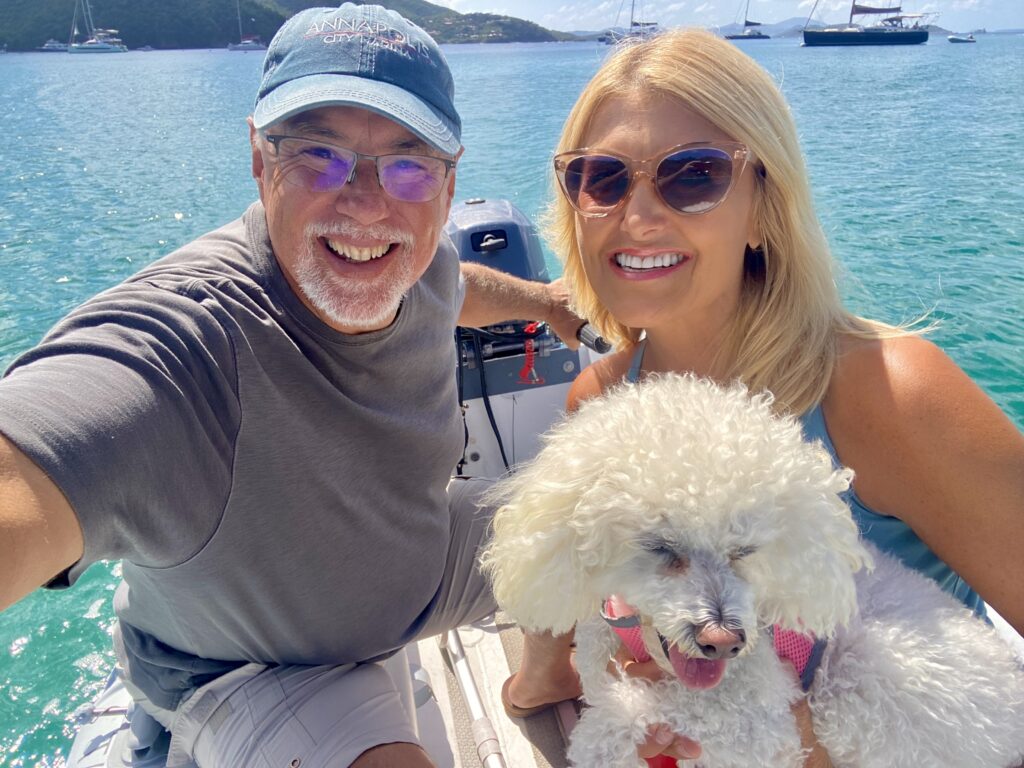
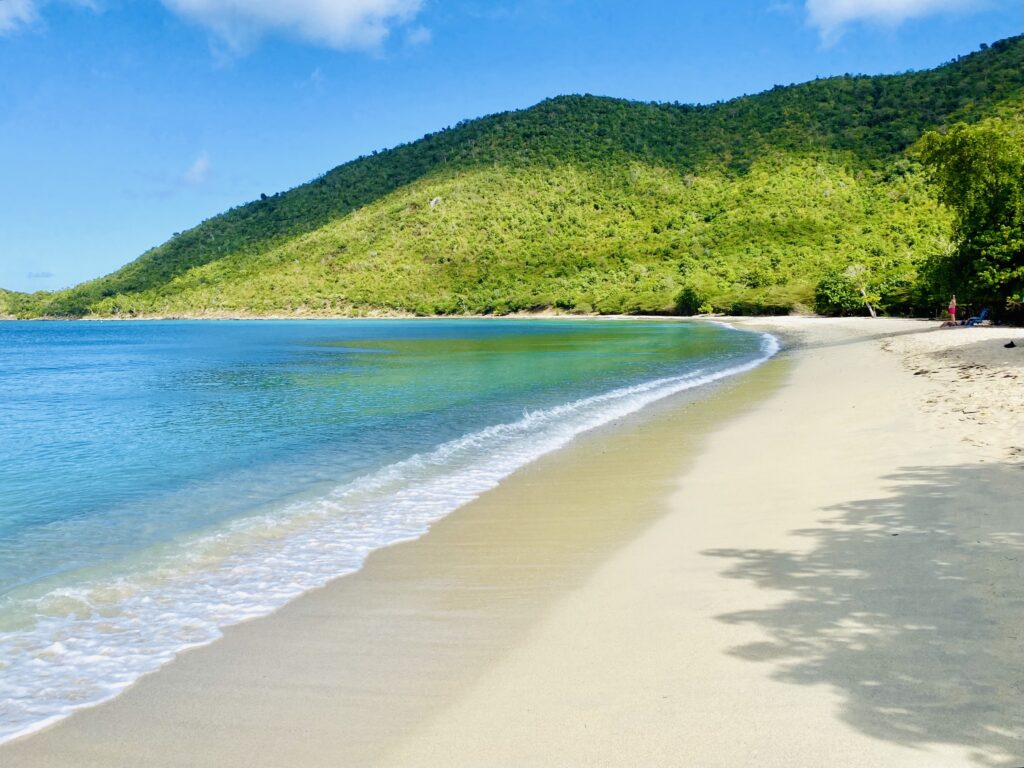
On one occasion, Kory, Craig, Bobbi, and I heaved our dinghies onto Maho beach so we could go for a tour of the island. Park rules here prohibit tying dinghy lines to trees or other objects on the beach. They also prohibit the use of anchors in the sand because of nesting turtles. So, we all had to muscle up and pull our dinghies high enough onto the sand so that the tide wouldn’t pull them back out to sea. Kory locked the two dinghies together so it would be a deterrent for anyone wishing to steal our dinghies. We’ve heard it is safe in Saint John, but it’s good to take precautions nonetheless.
We walked about 20 yards along the beach to the main road where we were able to catch a taxi. The beaches can get pretty touristy as all of the hotel-dwellers and day-trip boaters flock to these beaches. So getting a taxi across the street from the beach was a common and easy thing to do.
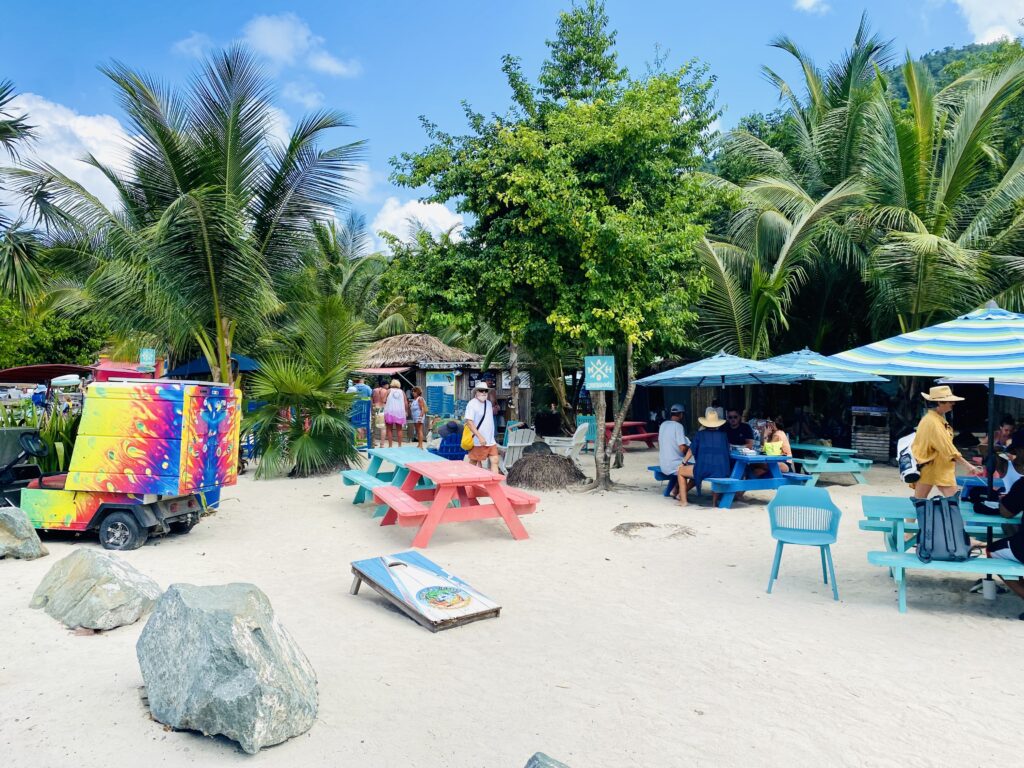
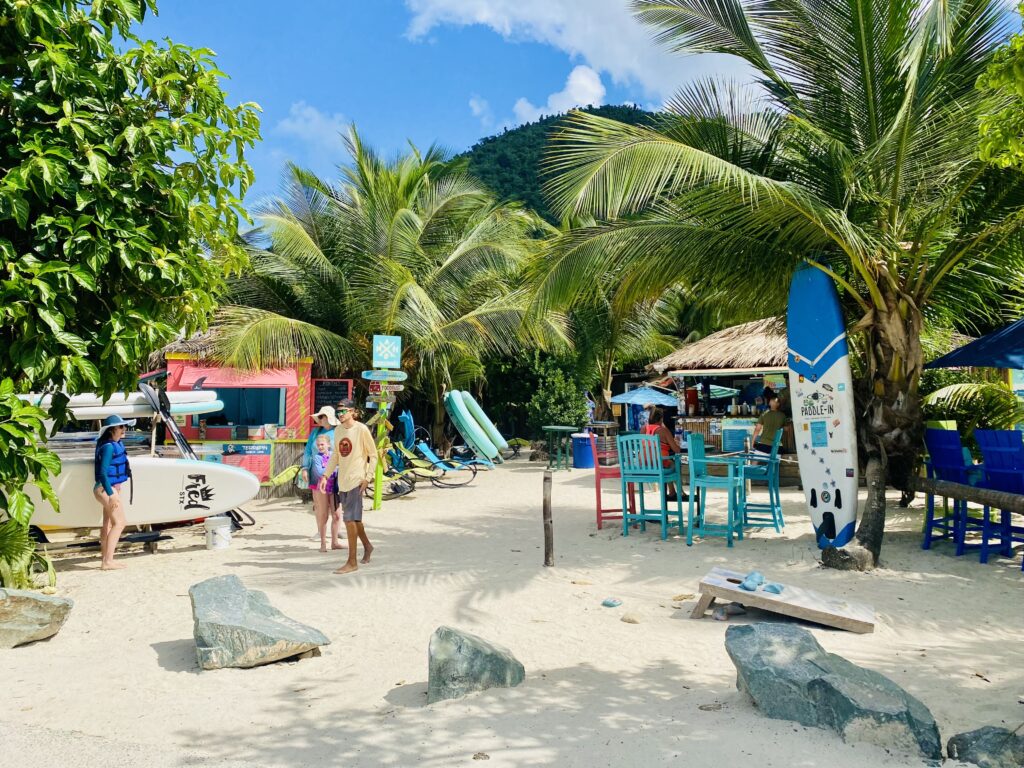
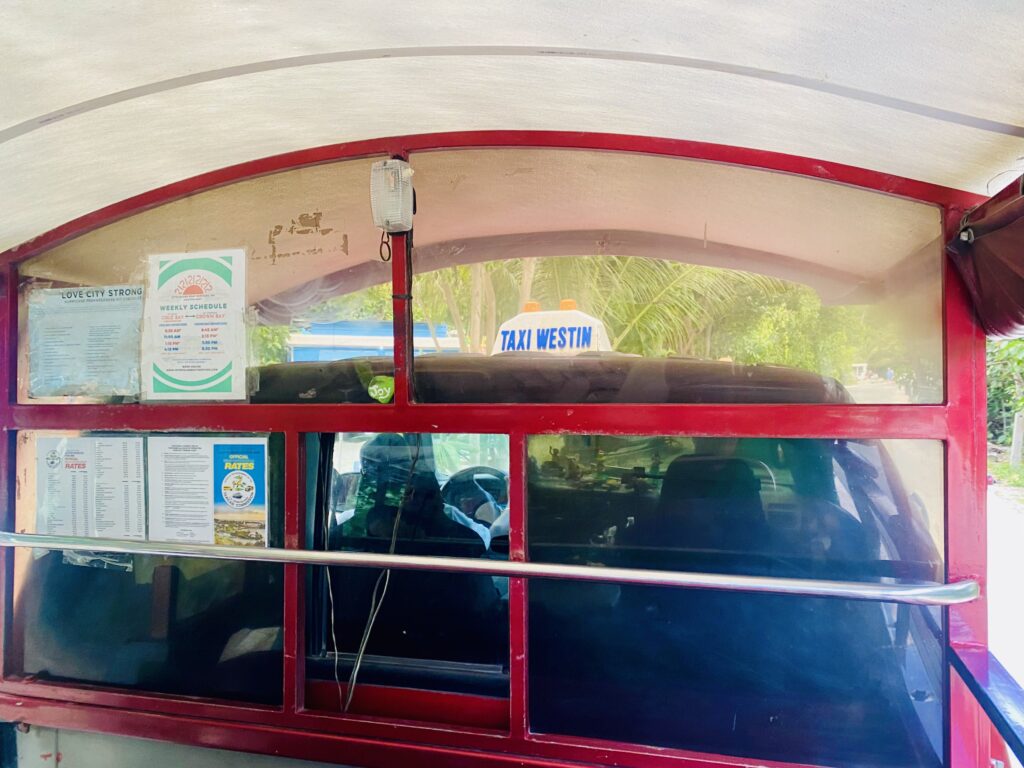
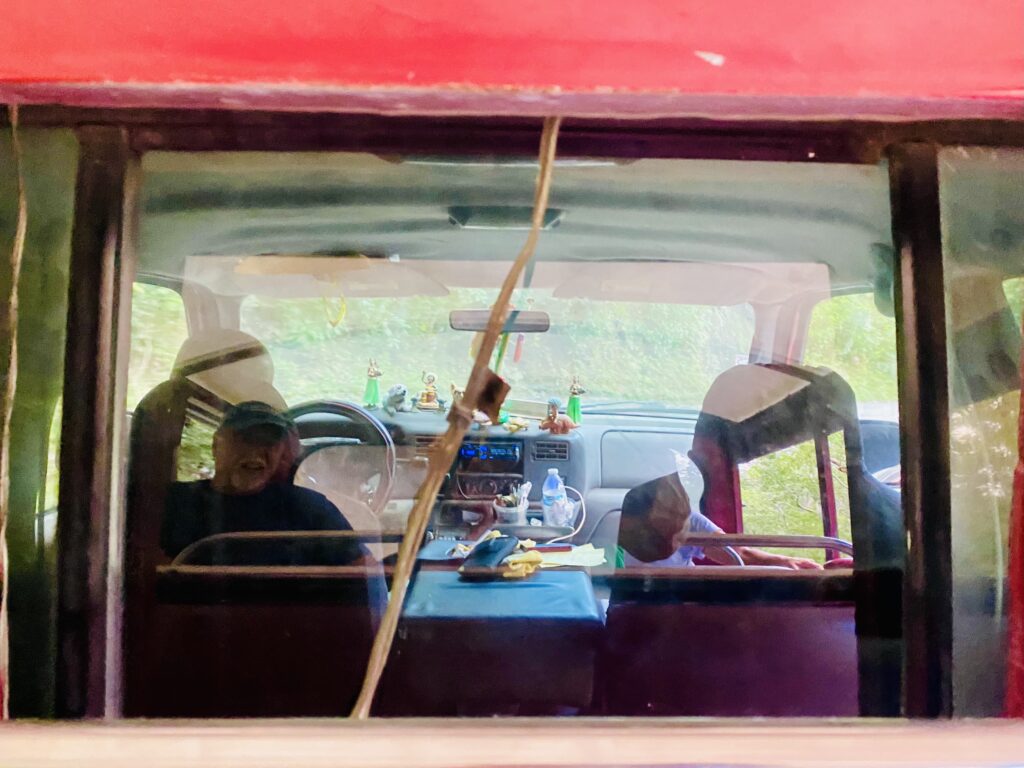
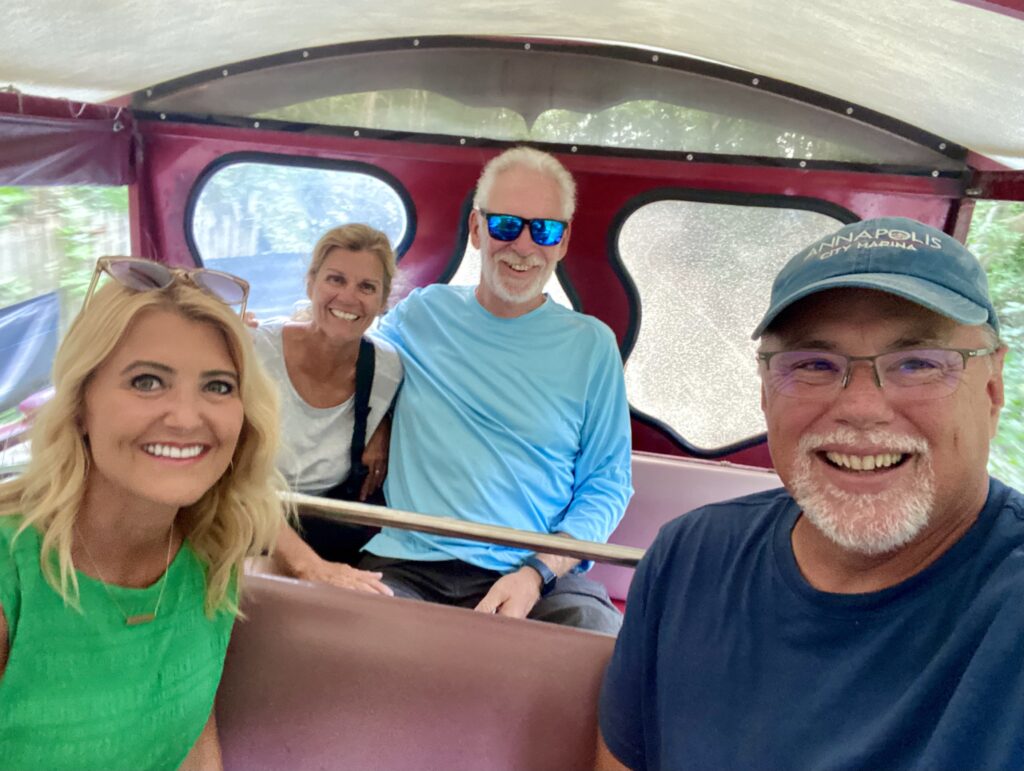
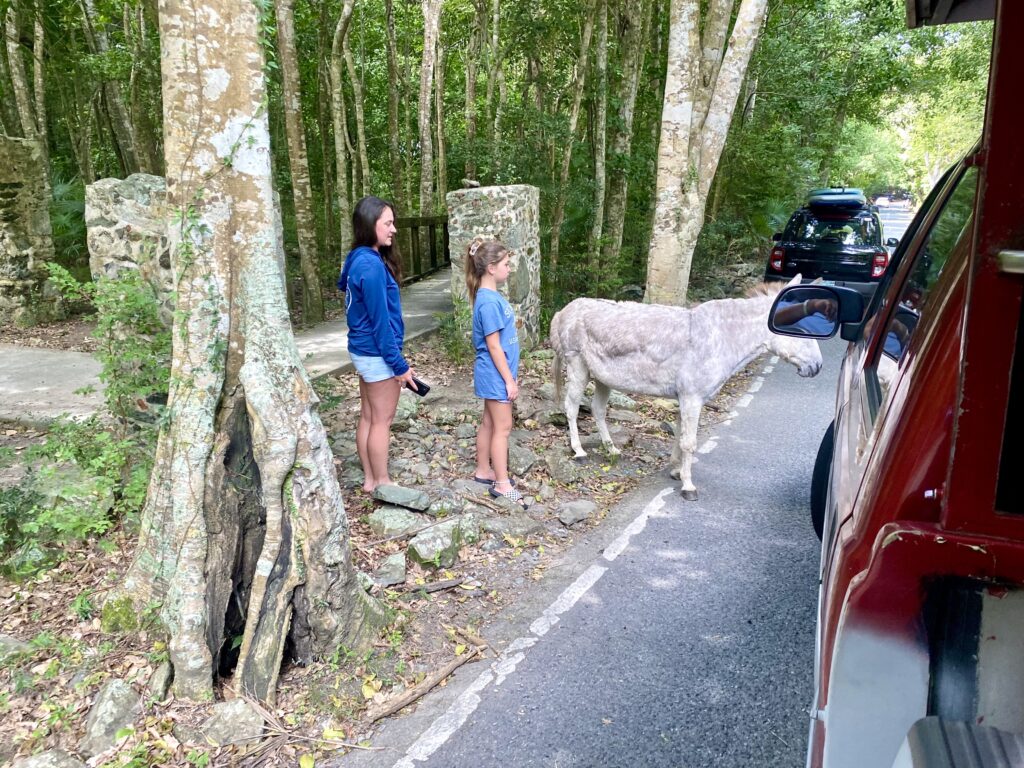
The ride to Cruz Bay, into downtown Saint John, was somewhat harrowing as we wound our way up the mountains on a narrow road overlooking a steep forested hillside with waters below. We rode in an open air taxi with no seatbelts, so we were counting on the driver to keep his eyes on the road and stay in his lane. It was quite the adventure, and a little like Mr. Toad’s Wild Ride.
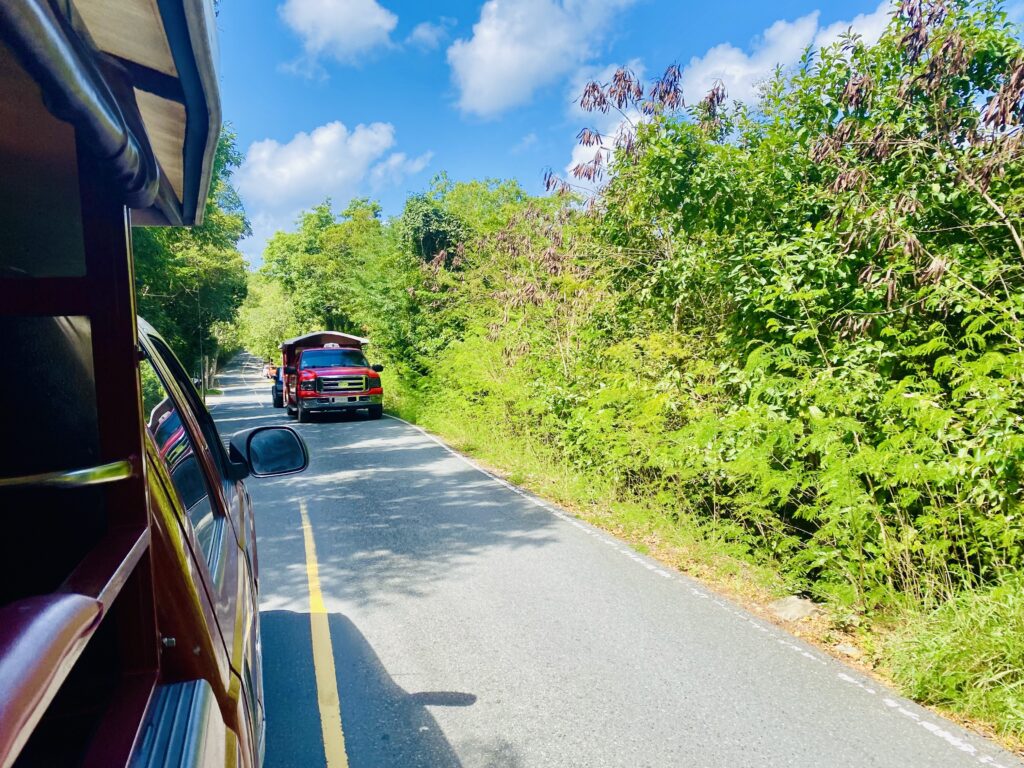
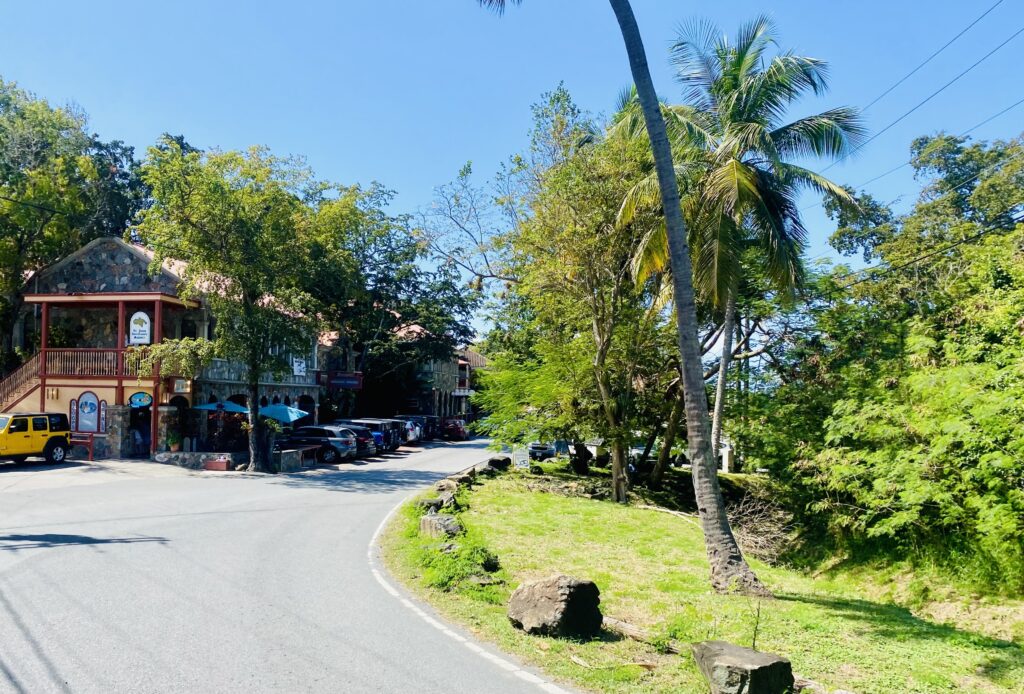
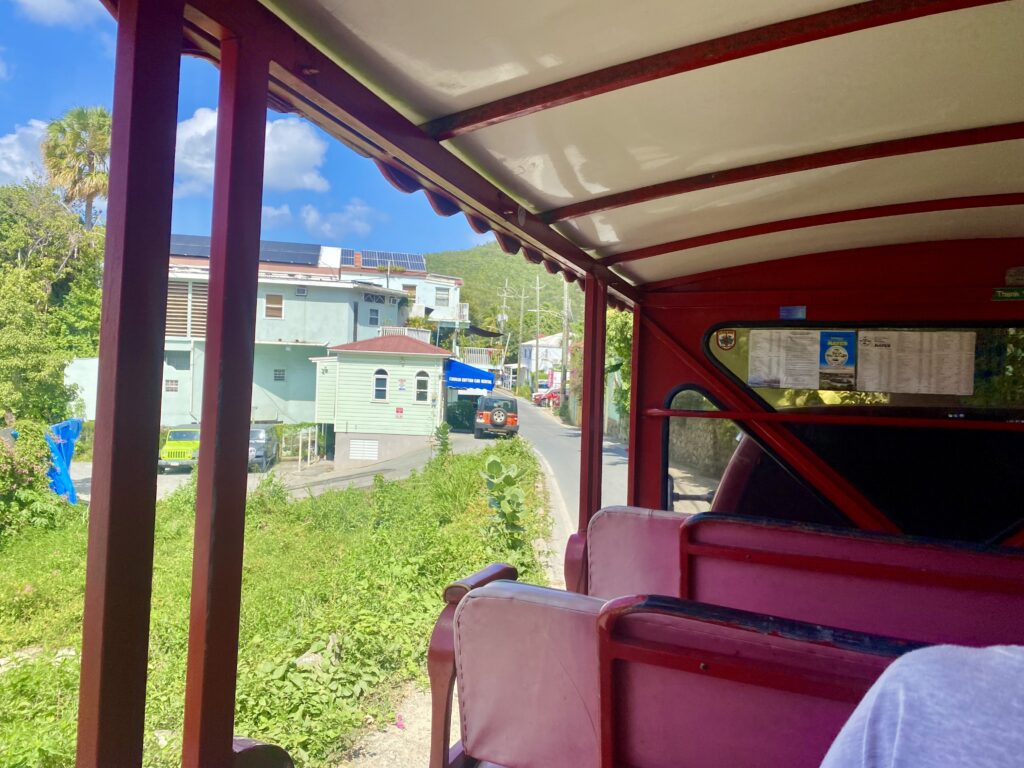
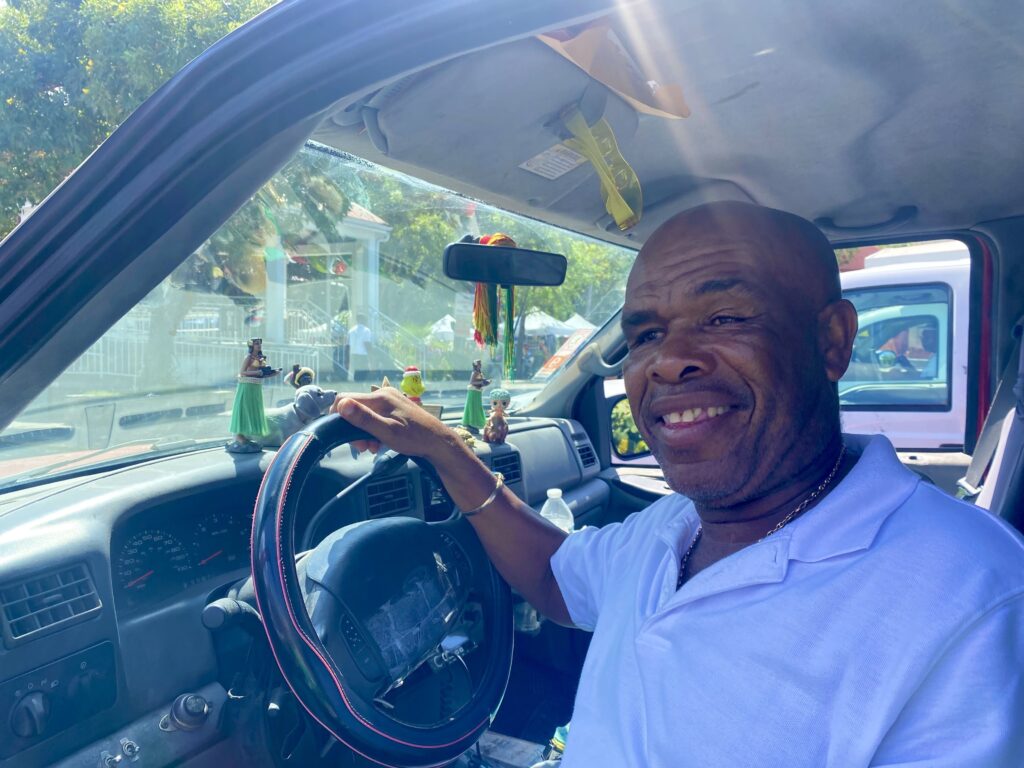
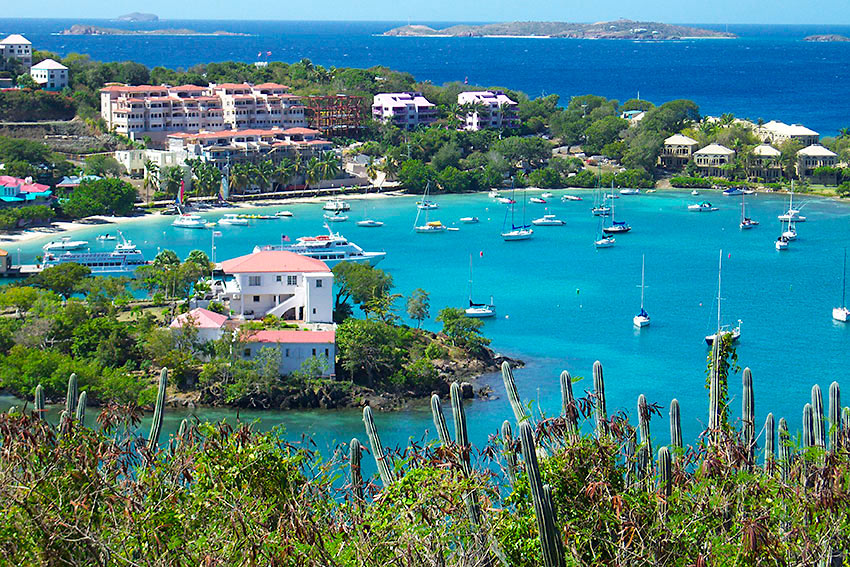
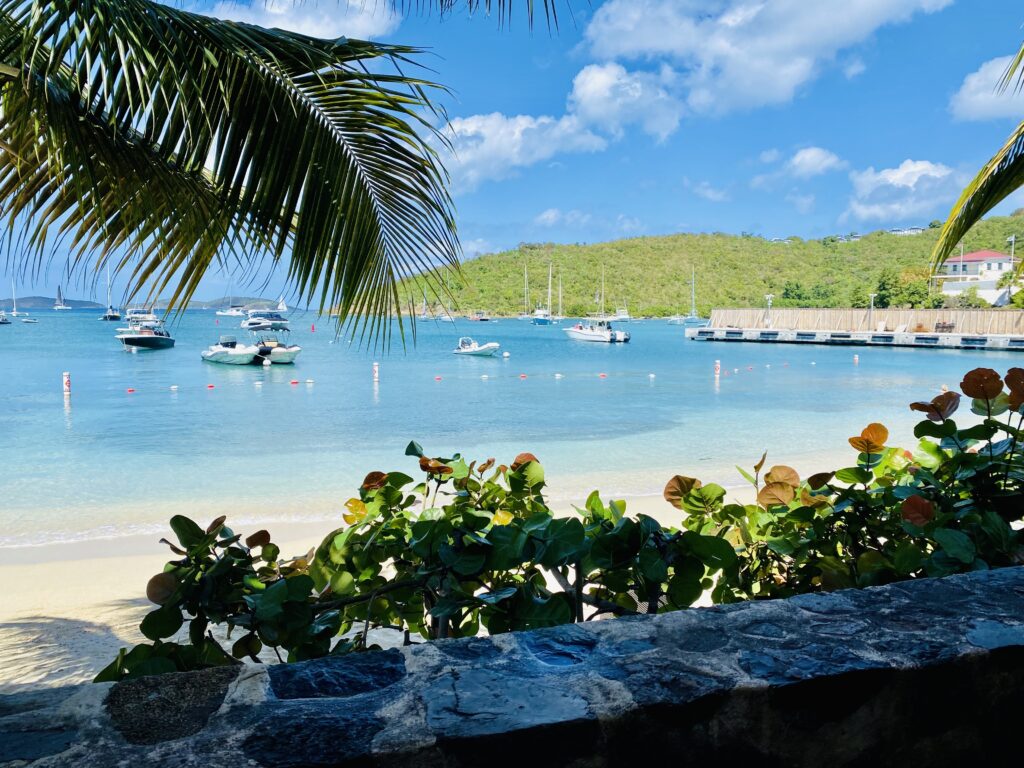
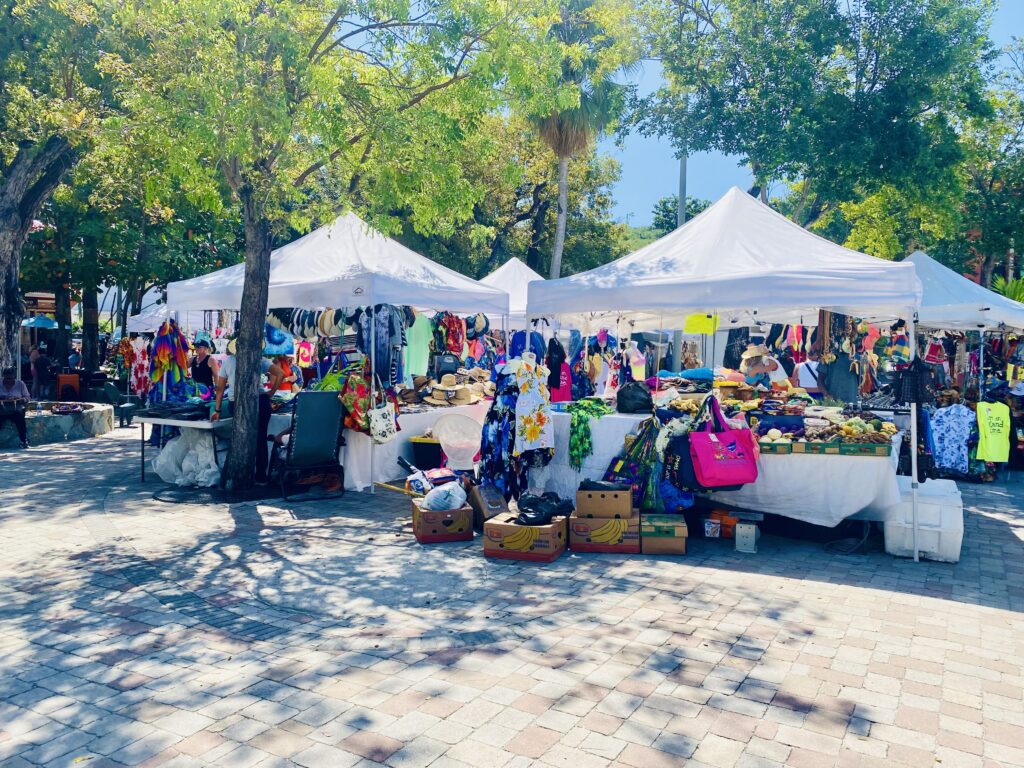
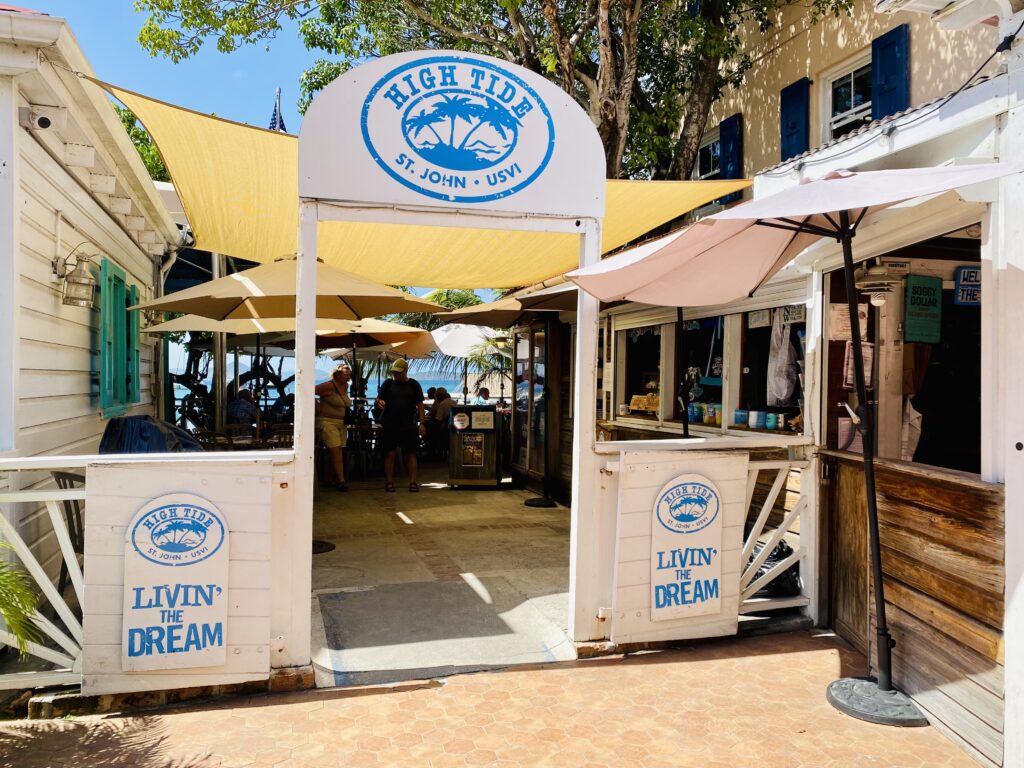
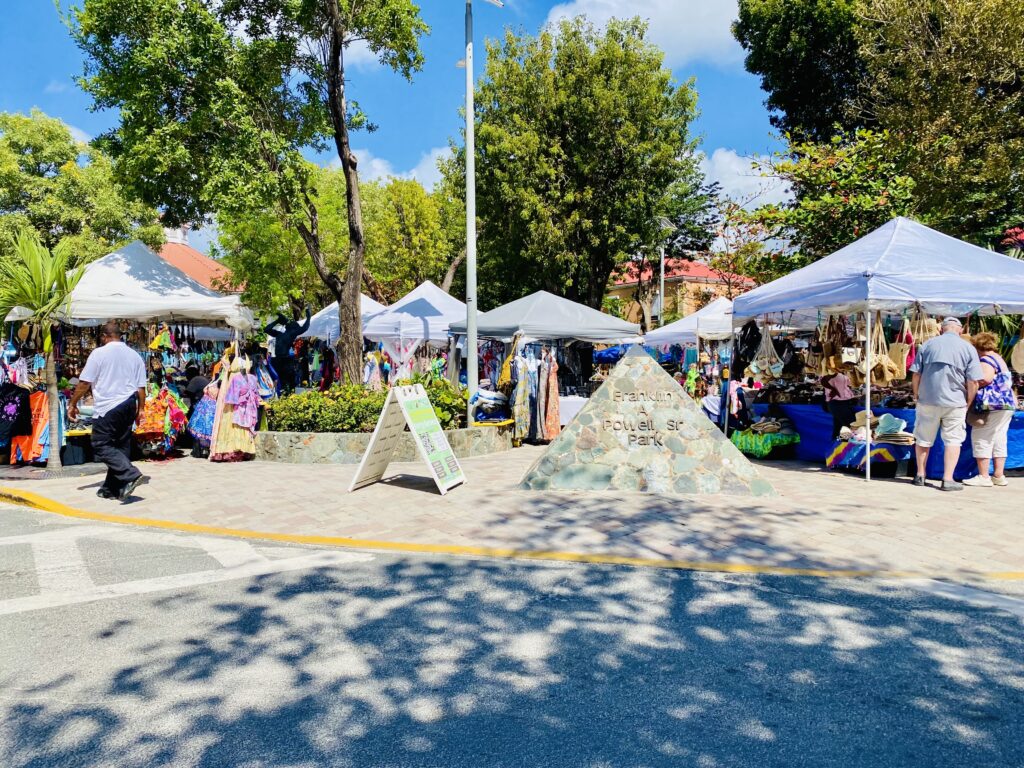
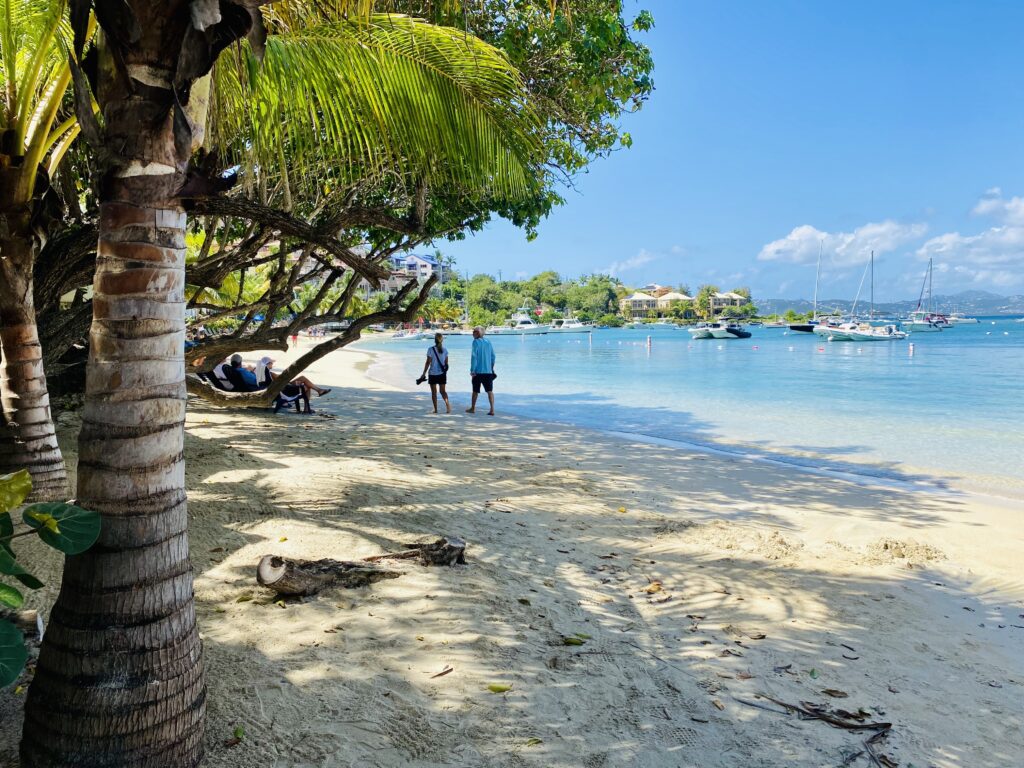
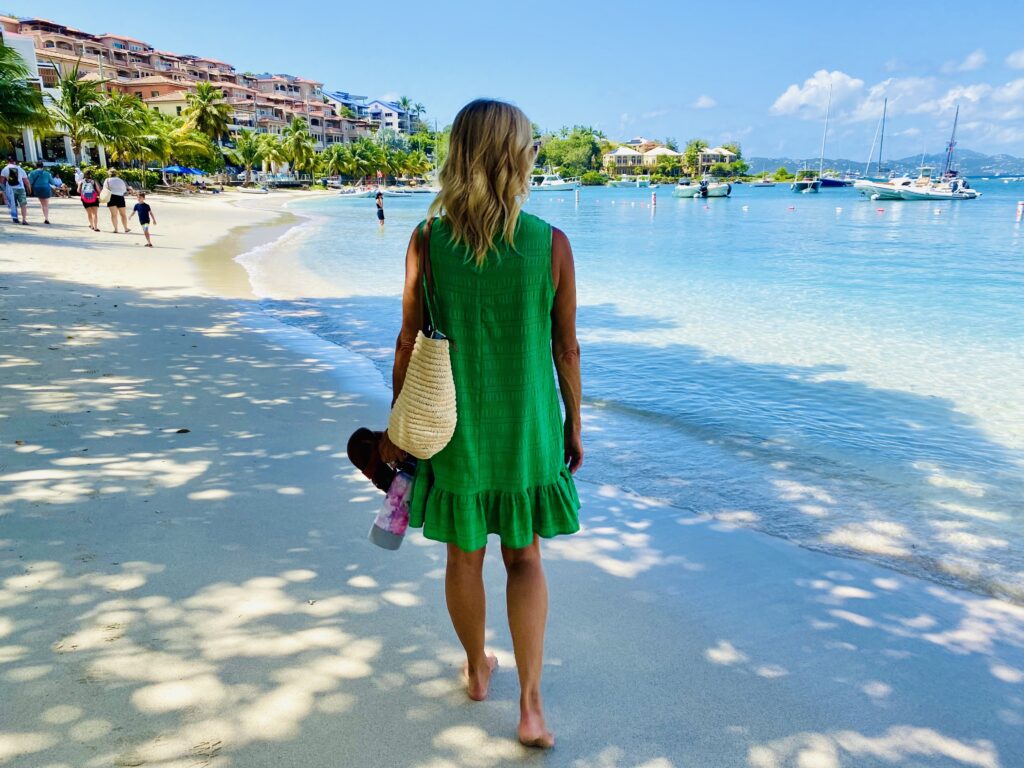
We had a nice lunch and stroll around town with Craig and Bobbi. Then it was time to brace ourselves for the taxi ride back to the anchorage through the winding mountains. The taxi driver was kind enough to stop at an overlook for us to take pictures. The bright sunny day made the waters below look so stunning.
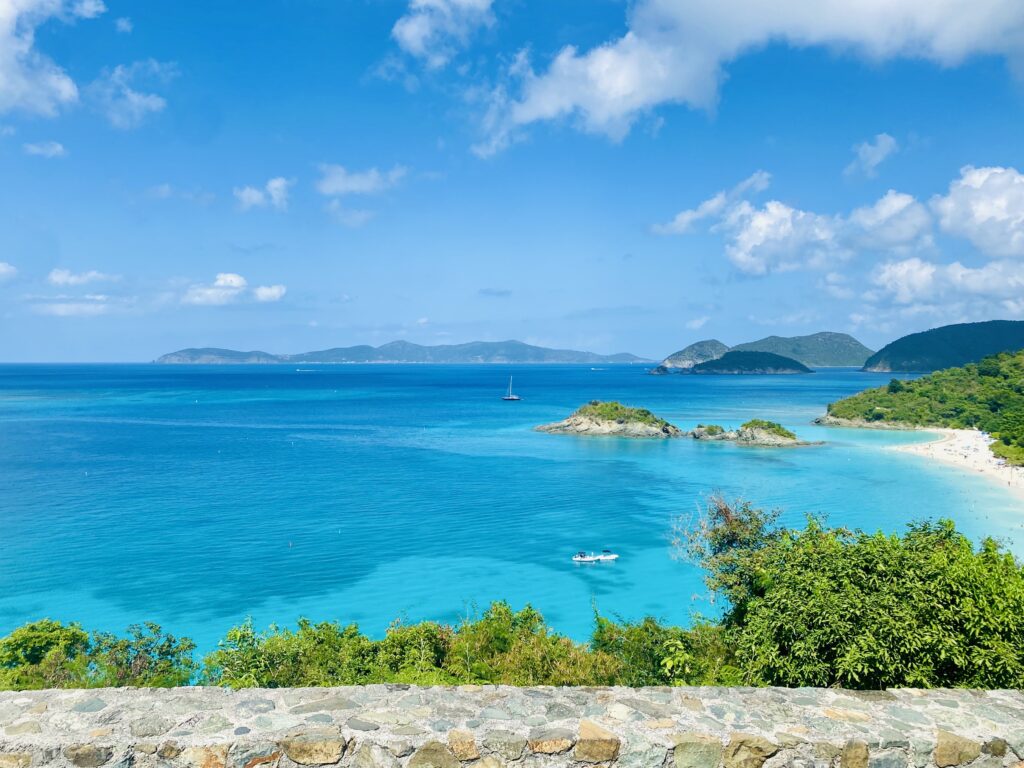
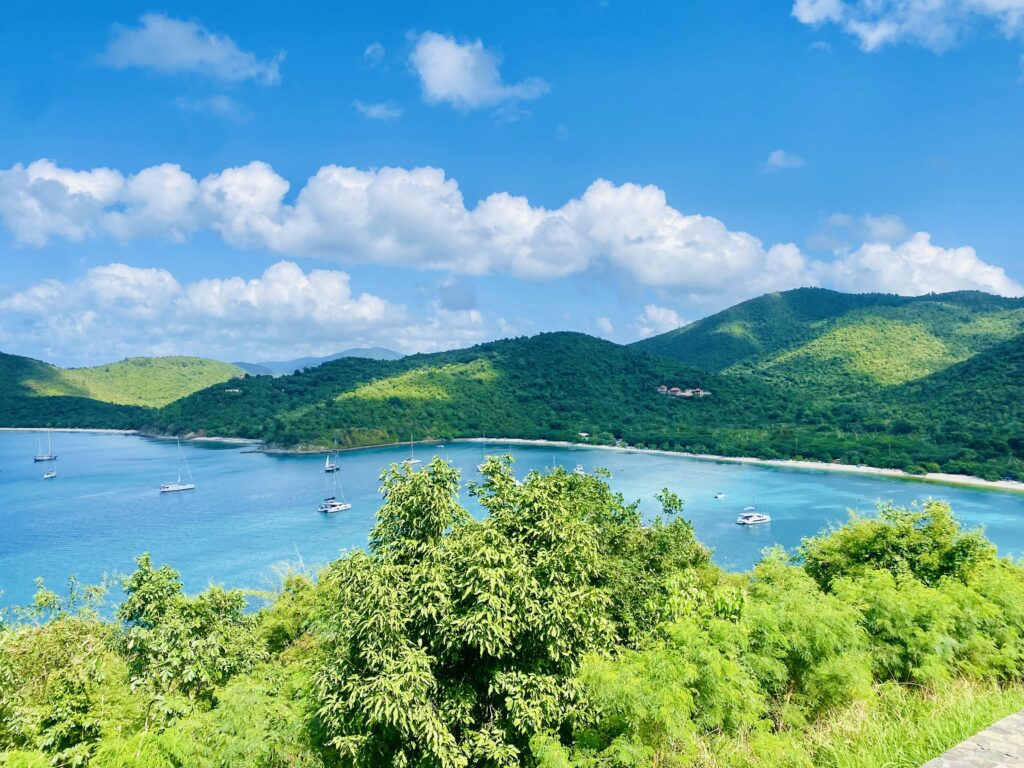
After a day of touring the island, it was nice to get back to the boat, enjoy a quiet evening, and watch the sunset. It’s a tradition among boaters to blow conch shells at sunset, and the folks at this anchorage were keeping that traditional alive. Blowing conch shells is said to signify the arrival or commencement of something. In this case, it signified the end of the day, for which we are grateful.
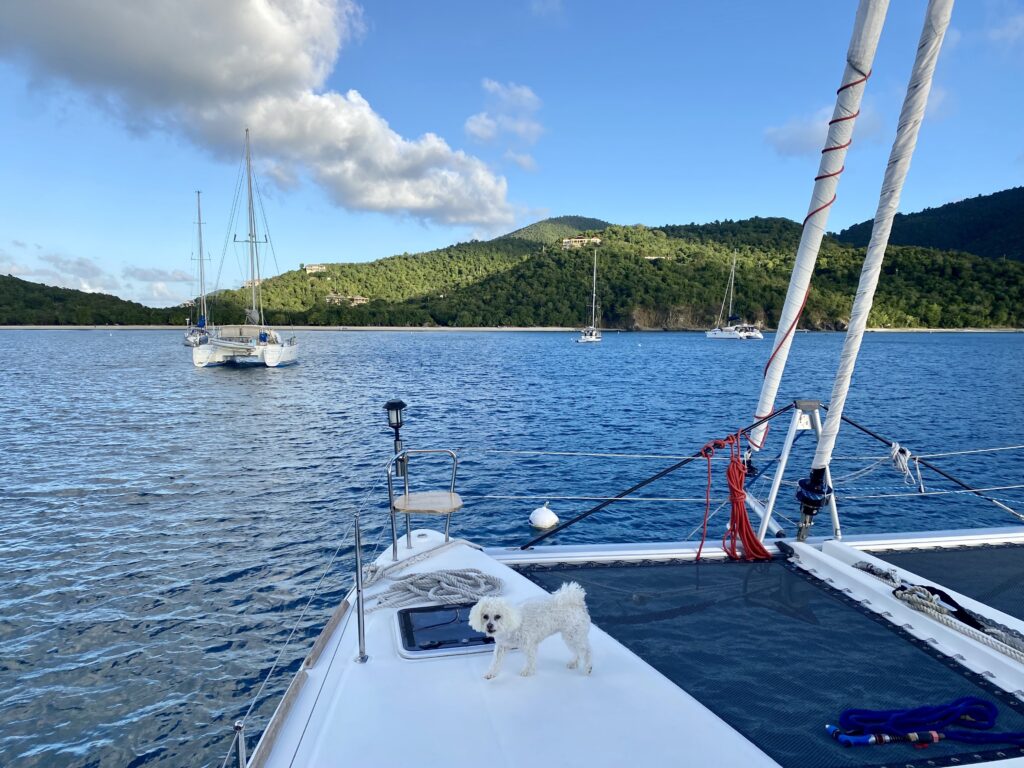
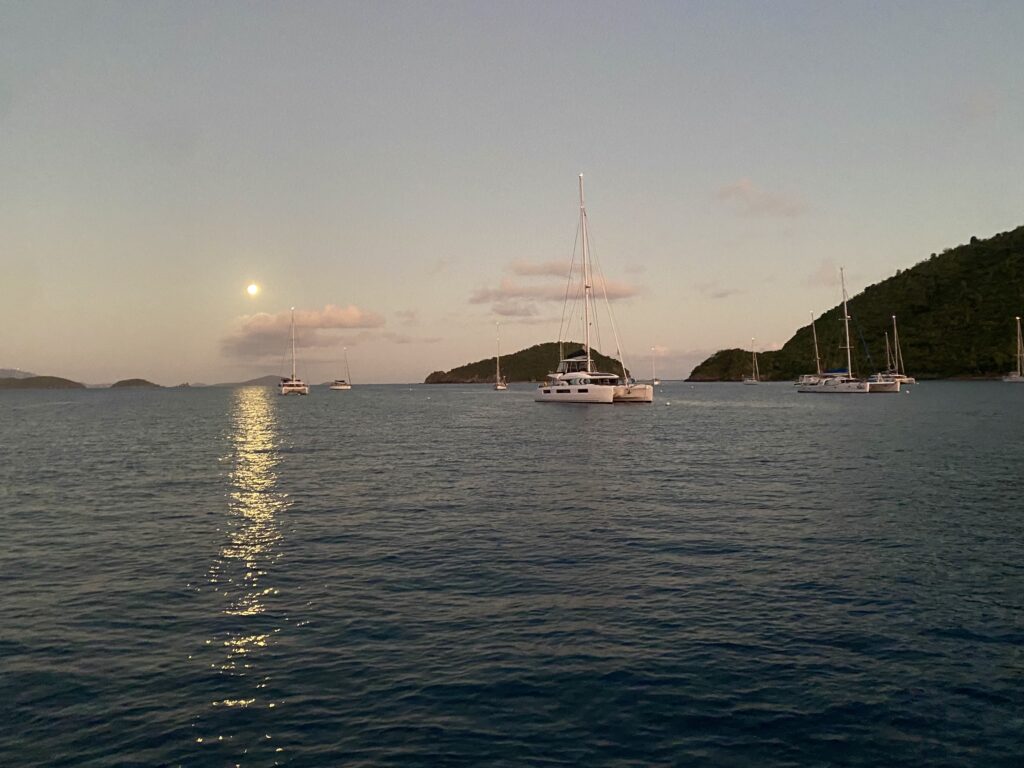
St. John is the smallest of the three main U.S. Virgin Islands, but it has a lot to offer. The National Park occupies more than half of the island. Its forests shelter a wide variety of birds, including cuckoos, pelicans, herons, ducks, warblers and hummingbirds. The mangroves in the east are said to have stunning corals, but we didn’t make it there on this trip. Dolphins, green turtles, and hawksbill sea turtles also inhabit the island’s waters. We were fortunate to spot a dolphin, a few turtles, and lots of fish in our bay.
One morning we drug our dinghy onto Francis beach, with the help of another boater who got off his paddle board to offer his strength. It’s quite a chore for me to help Kory pull our dinghy far enough out of the water onto the sand, so it was nice to have help. We found that most cruisers, people who do what we’re doing, are very kind and willing to lend a hand. It’s good to do the same for others as well. This follows Jesus’ command to “Do unto others as you would have them do unto you” (Matthew 7:12).
We took a walk along Francis Bay Trail in the National Park. It was a natural aviary, with birds chirping in the trees, splashing in the lake, and hunting for bugs in the mud. We spotted little crabs, giant termite mounds, a duck, and a black-necked stilt (which we had never seen before). Gracie was exhausted after our walk, and we made it back to the boat before the afternoon rains came. We needed a good boat washing, for sure!
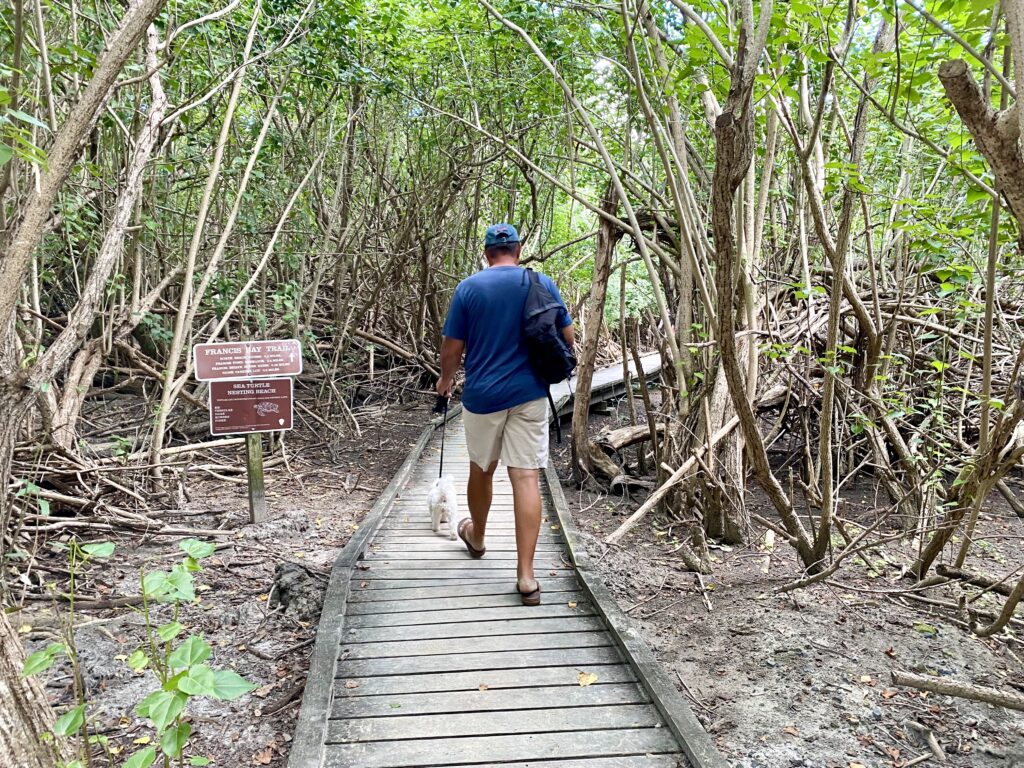
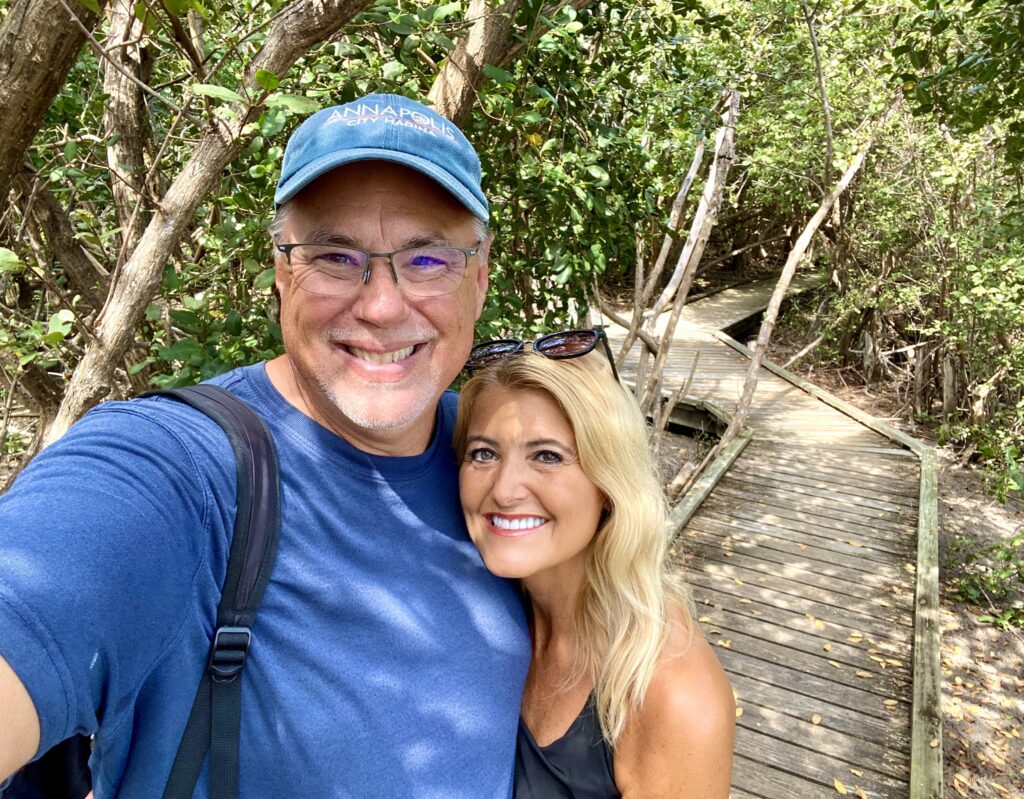
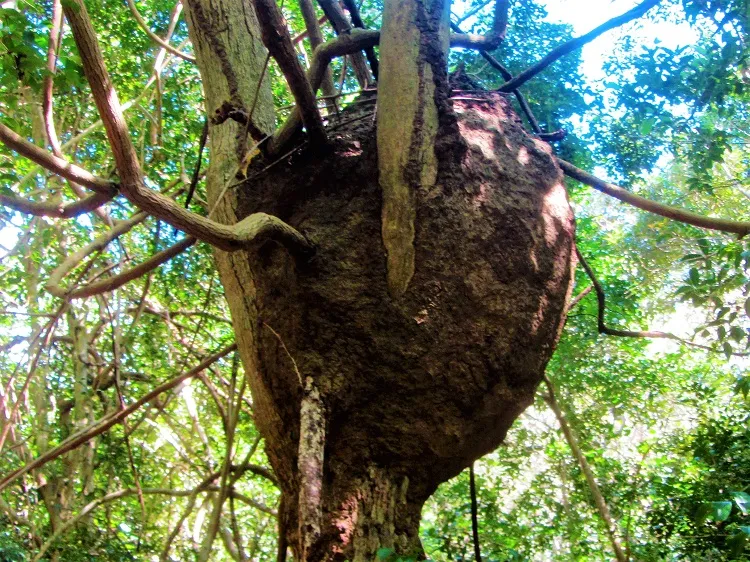
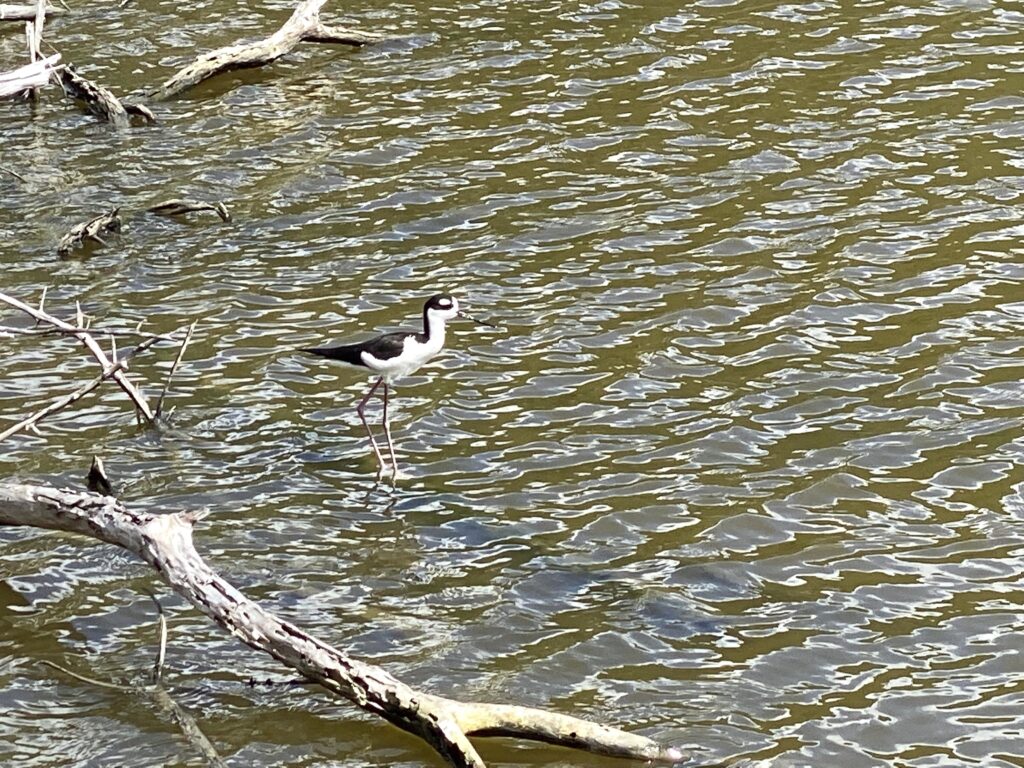
We had a wonderful time touring Saint John Island, and were so thankful that we could spend four full days here. As is typical of all the islands we visit, there is so much more to do, see, and learn than we get a chance to experience.
For the most part, this is a low-key, beautiful, mountainous island, and a gem for nature lovers. We would definitely come here again!
